Self-loading concrete mixer or volumetric mixer?
How to provide concrete for construction that necessary volume of mix was always at the right time?
It is a priority task for each construction project to provide site with materials: from calculation to storage and use.
Concrete mixture is not an exception, but on the contrary, it is one of a number of materials in construction that require special conditions. Concrete cannot be stored ready-made until it is needed for concreting. It must be used, like all construction mixes, immediately after it is made or within an hour and a half or two hours.
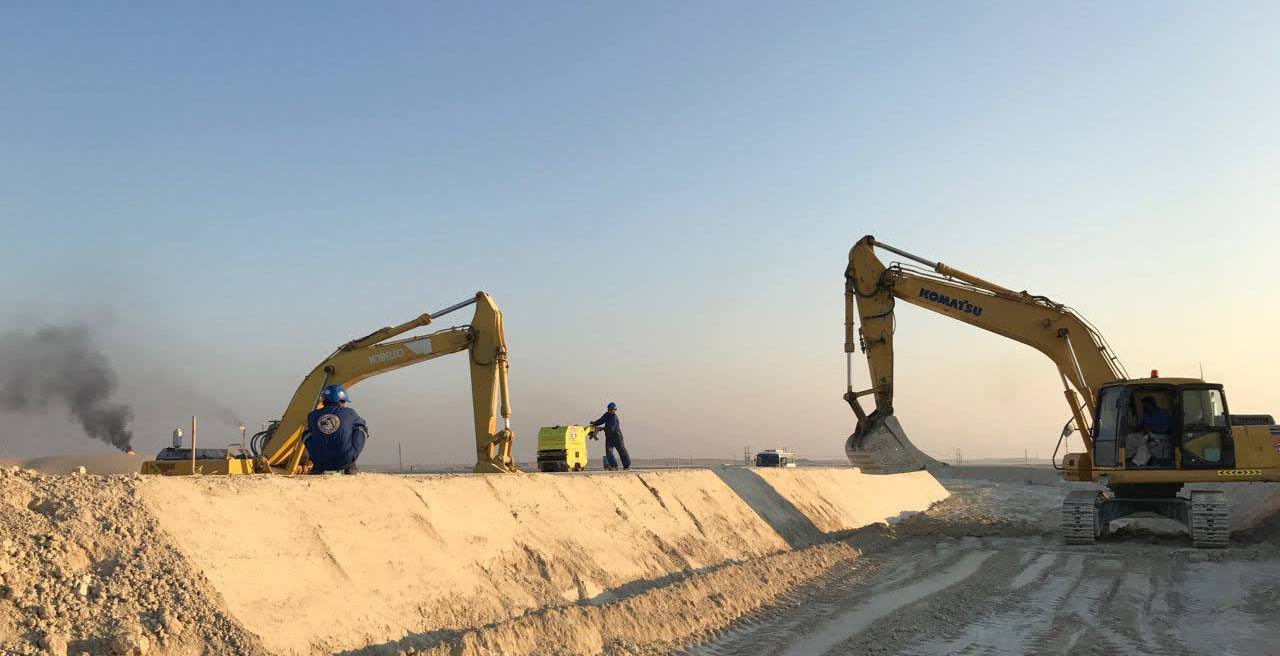
For every construction project that is in a hard-to-reach area, the following question arises: how do you provide yourself with a concrete mix? Here you need to be sure not only that concrete mix can make it to construction site, but also that it will maintain the necessary characteristics that your future construction will meet quality standards.
Many concrete batching plants abandon a project when they learn that the construction site is difficult to reach. Also, some suppliers have a distance surcharge on the cost of ordering concrete that is too excessive and it is going to be too expensive for construction project.
Overpricing and vendor refusals occur precisely because ready-mix concrete, even with the use of chemical additives, may not be able to withstand lengthy transportation. Therefore, sometimes for facilities that are far away from concrete plants, it is not worth relying on such a method.
How to provide a concrete mix for construction in an inaccessible area?
Let’s take a typical situation and look more closely at an example. There is a construction site that is 40 miles from the nearest concrete plant, in hard to access with bumpy and mountainous terrain, and it needs 300 cubic yards of mix.
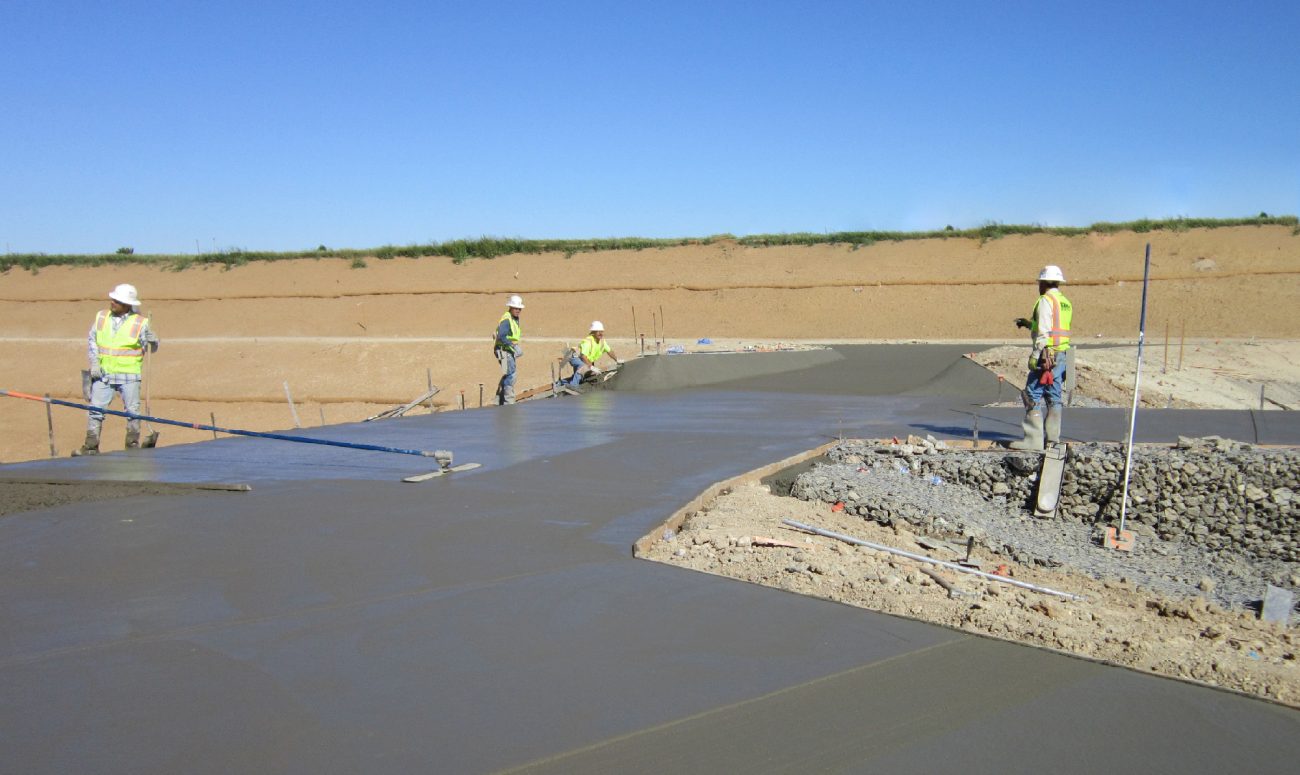
It seems like an easy enough task for suppliers?
Then let’s complicate it with conditions that are close to reality. For example, construction takes place in a southern state of America: climate is arid, summer is unbearably hot and average temperature reaches 95°F. Every construction project must be concreted in the midst of such weather conditions, because construction period is limited to a season.
To solve the issue with concrete provision, you need to choose one of three ways:
Delivering ready-mixed concrete from the nearest batching plant.
You can’t avoid this method because delivery is still possible for some construction projects. For example, when weather conditions are not so harsh, transport distance is not more than 60 miles and terrain on the way to site is not too rough.
In the given situation, delivery is not advisable.
Brought mixture will not have necessary characteristics, taking into account the scorching sun and time delays due to uneven terrain. Exposure to temperature reduces concrete strength, even if you calculate necessary composition together with additives that prolong the mobility time.
Volumetric concrete mixers
A more familiar way of providing mix to a hard-to-reach site, which involves making ready-mixed concrete already at the construction site.
Volumetric mixers are divided into two types:
■ One of them is essentially a concrete plant on chassis. All components are stored at a site of the contractor. Before departing to a pouring site, all aggregates are loaded into the corresponding compartments of the machine with a help of a front wheel loader. Mixing of concrete can then occur directly on site upon arrival.
The contractors load the required volume of sand, cement, crushed stone and mixing water into separate tanks. Everything happens according to the customer’s individual recipe. Volumetric mixer blends all components and makes concrete upon arrival at the site.
This special-purpose machinery allows supplier and customer not to worry about the quality of mixture, as it is not exposed to long waiting time and the weather. Main chemical reaction in concrete occurs when cement and water are mixed. As long as these components do not react with each other, further changes in chemical composition of the concrete do not start.
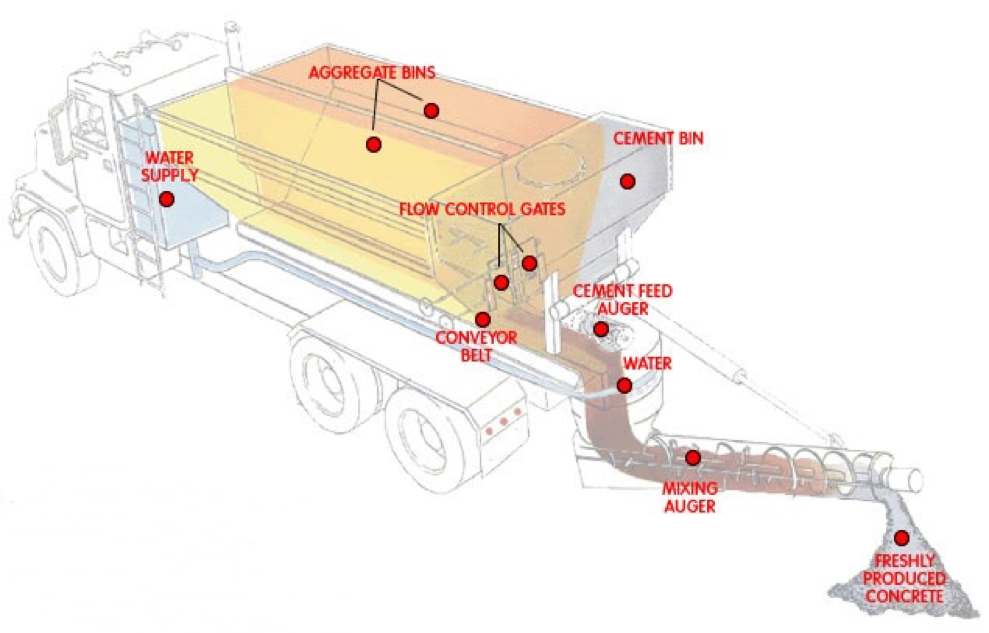
■ The second type of volumetric mixers is not mobile. This equipment is more like a compact stationary concrete plant.
Volumetric mixer is delivered to construction site, installed, then you produce concrete mix in accordance with required formulation directly on site.
The whole process from selection, location on construction site and loading of aggregates to concrete production is fully controlled by you, as well as need for additional equipment for the stationary volumetric mixer to load mixture components into it.
Self-loading concrete mixer
This type of equipment is new to the U.S. and is only gaining popularity in the market. By design, a self-loading concrete mixer combines an all-terrain concrete mixer and front-end loader.
Self-loading concrete mixer allows you to produce concrete at construction site in the similar way as a volumetric mixer. The entire production process, including loading, takes place at construction site, as with the second type of volumetric concrete mixer. Mixer can load all ingredients of concrete into the bucket, which is already on site.Two people are needed for debagging cement bags. Then special-purpose machinery mixes the concrete inside the drum, transports it to casting area, and discharges ready mixture. The concrete is manufactured independently of any suppliers, and is fully controlled by construction company and employees involved in concreting process. Therefore, there is no need to worry about the quality of components used, finished mixture, delivery time of concrete.
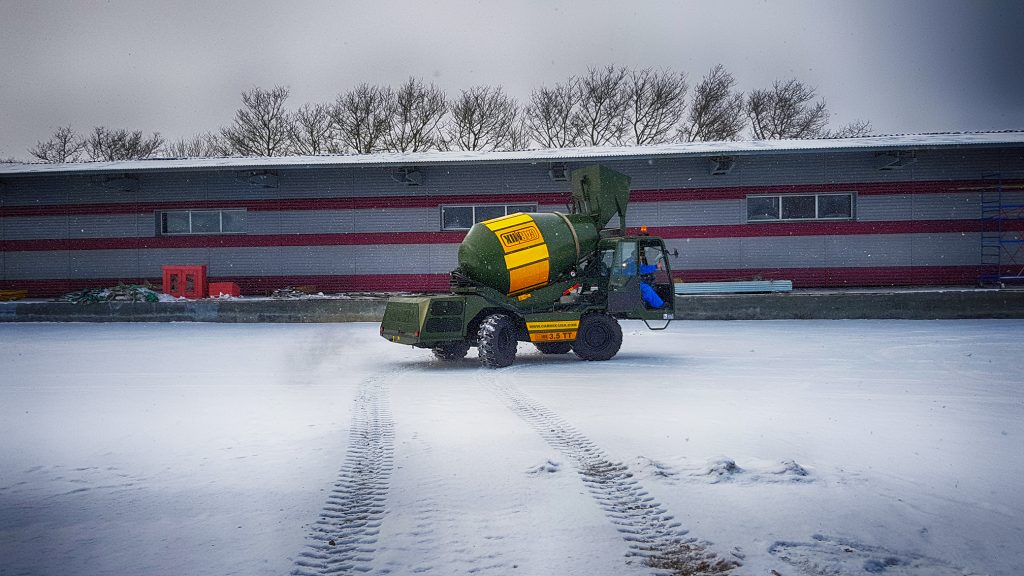
Carmix is the industry-wide standard for this type of equipment in the world. It is an Italian manufacturer, which has specialized in concrete mixers with self-loading function for over 50 years. For a long period of time the company has been improving its machinery and selecting reliable and customized concrete equipment components for this type of known brands that have already proven themselves in global market.
We will consider and compare two ways of providing concrete that are suitable for most construction sites in hard-to-reach areas.
The entire process of making a mixture with self-loading and volumetric mixers includes three obligatory steps: loading materials, delivery and blending, and unloading on site.
As mentioned above, essence of both types of equipment – making concrete mix at construction site. If we consider the design features of the two types of special-purpose machinery, we can observe significant differences in production process, which affect economic performance.
One nuance that needs to be addressed right away: additional equipment is required for volumetric mixers, while a self-loading concrete mixer does not.
To start making concrete, a volumetric mixer requires, at a minimum, a front-end loader that will load components into the silo located on the mixer. A concrete mixer is an automated machine that loads materials independently.
Let’s understand how difference in loading can affect planning of construction process of the whole project and economic resource costs.
Loading of materials
Let’s start a comparison with a detailed consideration of material loading process. After all, the use of additional equipment only seems insignificant, but it implies a more complex organization of production process as a whole, in which you have to invest additional funds.
Firstly, not every front-end loader is suitable for loading the volumetric mixer with components. You need to choose equipment with a bucket that rises above the level of volumetric hoppers. Secondly, for loader requires its own driver, hence the additional labor costs. Also, when using another type of special-purpose machinery increases the likelihood of stopping the process. After all, the loader can break down, its repairs will take time, which will stop loading of materials.
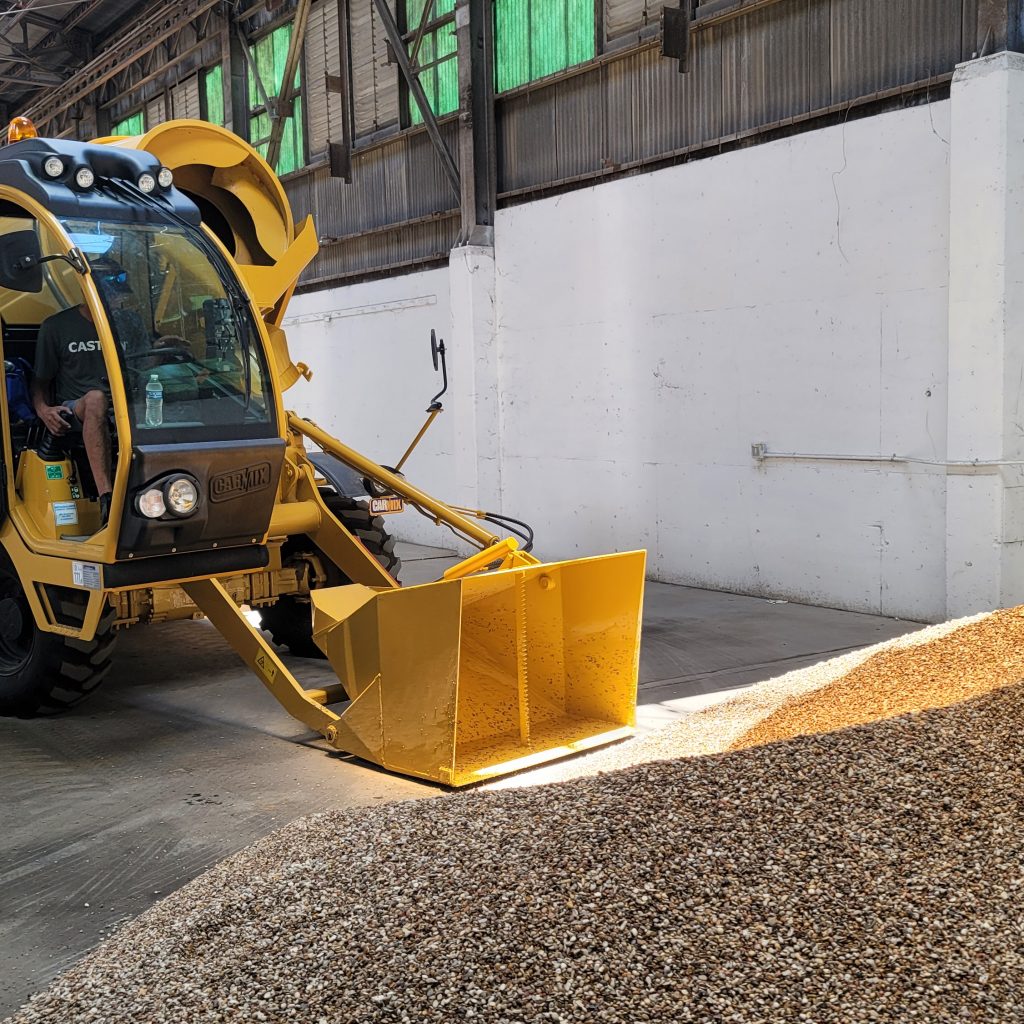
Obviously, there are more than one front loader in his fleet, but the larger number of machines, the higher the percentage of your order.
Front loader has to spend extra time to load all the necessary components in each separate hopper of volumetric mixer. It has to drive up not only to sand and crushed stone, but it also has to drive around the mixer on different sides to unload into separate bins.
Cement, as an active ingredient, has its own requirements for storage, as it is easily affected by weather. Even high humidity can reduce the quality or make the substance unsuitable for concrete production. So how will you store it and how will you load it into a volumetric mixer?
You will need a specialized silo to store cement. The most time-optimized option is when the silo height is suitable to load directly into a volumetric mixer. A cement silo with appropriate dimensions is needed for a large volume of mix production.
It also requires an additional employee. He or she has to supervise this part of the whole process for a fee.
Water is also needed. Water is poured from large volume tanks and a powerful pump is used for loading. One cubic yard of concrete requires about 50 gallons of water.
When you order a volumetric mixer delivery service, this whole process in terms of resource costs, both time and financial, goes away. All of the resources are already built into the cost of the service itself. However, if you decide to produce concrete mix using a stationary volumetric mixer, then economic costs of additional equipment, salaries of all employees and other costs are borne by you.
An important factor is compliance with all environmental safety standards. For example, not everywhere you can install cement storage equipment and use components to produce mixtures. Each state has its own legal restrictions for storage and use of such substances.
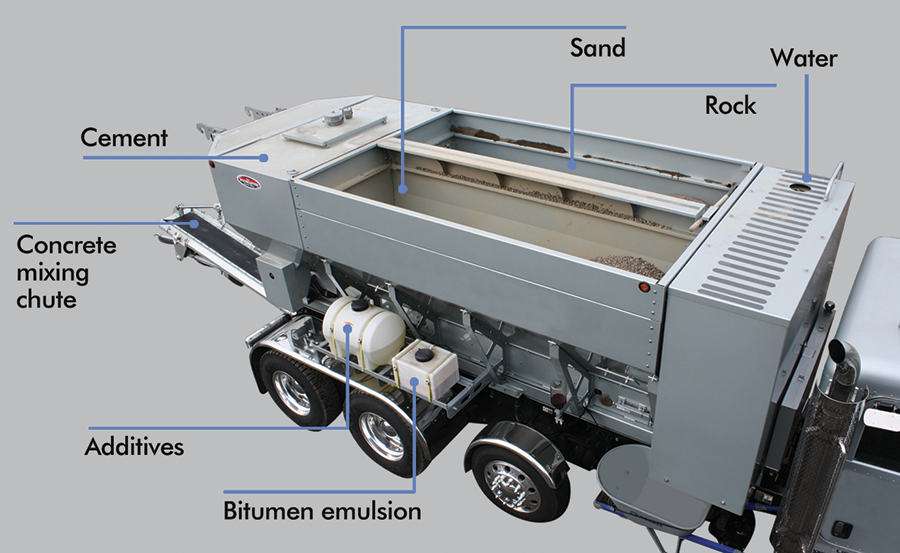
If you have such equipment, costs become half as much, because usually, equipment for concrete production process is rented. Consequently, you incur costs for delivery and installation, in addition to maintenance, employees and rental.
No additional equipment is required when you operating a Carmix concrete mixer. Its design includes a bucket with which materials are loaded. Yes, cement silo is recommended for storing large amounts of cement on site. It is also possible to store cement in bulk bags of cement and debag it if necessary. As we mentioned earlier, you will need two additional workers for this process to bring the bag of cement (standard 50 lbs bags that you can find in any Home Depot near you)to bucket. This process can be done by any worker at the construction site. It takes only 3-5 minutes to load cement.
Water pump is not required when using Carmix. Mixer already has a built-in hydraulic pump, which can load water both directly into concrete mixer’s drum and water tanks, which this type of equipment has.
The first phase of concrete production – loading with aggregates, water, and cement – is already taking a big toll on both time and money.
As a result, we can already make a comparison of the first stage of concrete production by loading each component of the mixture:
| Material | Volumetric concrete mixer | Self-loading concrete mixer |
| Sand | Front loader is required | — |
| Crushed stone | Front end loader is required | Own loading bucket |
| Cement | Cement silo is required | Own loading bucket. In the absence of a silo, 2 workers are needed for debagging |
| Water | Tank with pump is required | Water source is required |
Level of automation of special-purpose machinery affects the duration of loading and additional costs. The more additional equipment and workers are involved in the process, the more time will be spent. At the same time, each unit of equipment and additional employees for its management impose their own economic costs.
You can clearly see that self-loading concrete mixers are more automated during the loading phase compared to volumetric mixers.
You can calculate the total time it takes to load in one concrete mixing cycle. If you take Carmix 3500 TC model with a concrete mix output of 4.5 cubic yards, stage duration will be about 15-20 minutes.
If we talk about volumetric mixer, the loading of all aggregates when using additional equipment will take at least 20 minutes with approximately same volume of concrete at the output with Carmix model.
Now let’s take a closer look at a stage that is radically different: delivery to discharge point.
How long does it take for both types of machinery to bring concrete mix to the pouring area of the site?
Delivery to discharge point
When we talk about delivery to place of discharge, it is also initially worth considering volumetric mixers in more details. After all, you’re ordering a comprehensive service from a supplier, who is responsible for what volume and by what date and time your concrete mixture will arrive.
When loaded, we’ve seen what the bulk of the cost is made up of, and it includes:
- The cost of materials
- A percentage for use, maintenance and wear of all special equipment during loading and delivery, including working fluids
- Portion of the salary, as 3 employees will be needed to accommodate one complete cycle of production and this is not counting the other people involved such as management and other departments.
Do not forget about the taxes imposed, both on delivery business and when ordering concrete mix.
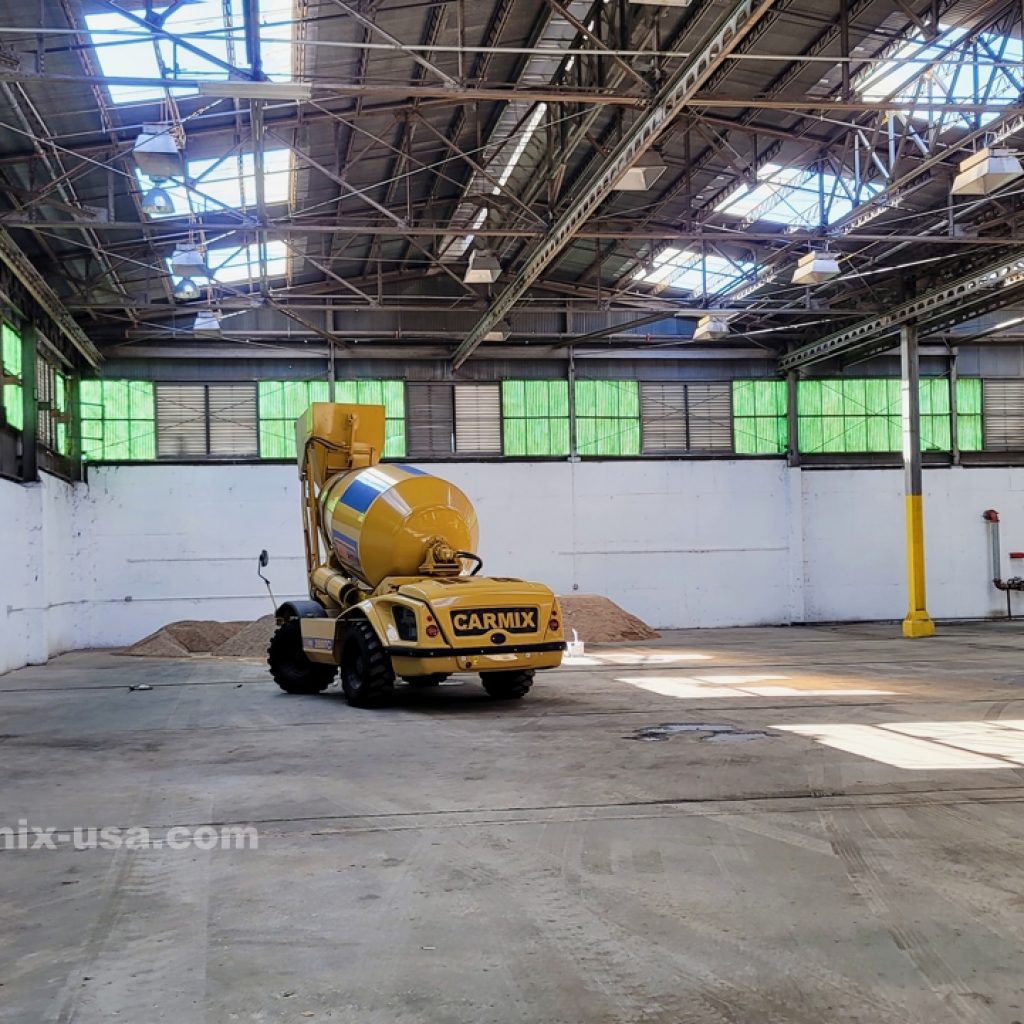
If we consider mixture production directly on site with the help of self-loading concrete mixer in the similar way, the cost will include:
- cost of the components of mixture
- operator’s salary
- materials for maintenance of special-purpose machinery
- delivery of special equipment to site
- purchase / rental of a concrete mixer
Total cost will include self-loading concrete mixer price. However, Carmix will recover expenses on average during the 12-18 month period of operation. If a batching plant is rented, then cost includes rent and taxes.This is where all expenses end, since concrete is produced directly on site and subsequent work takes place within the construction site.
Delivery to site is an important part of total cost of order for volumetric mixers. Since we’re talking about hard-to-reach sites, they have a long haul distance of at least 40 miles or more. You should also take into account terrain, because such a mixer can not pass everywhere, especially with a full load of dry components.
Even if they are not mixed into ready concrete, they still make up a decent total mass. 10 cubic yards (along with the volumetric mixer) will weigh approximately 73,000 pounds at full load.Even with high driving performance, powerful engine, and high off-road capability, you can’t drive over hilly terrain or over a passenger car bridge with that kind of weight. So supplier must be sure of all the road conditions which the mixer will pass, in addition to the distance to calculate the cost. The farther the facility is from mixer loading base, the more expensive the final cost will be.
Can self-loading mixers overcome terrain of hard-to-access terrain? After all, we are talking about an environment where even off-road equipment needs to have high driving qualities at the site. Self-loading concrete mixers are the optimal type of equipment that can pass slopes, potholes, off-road terrain and work in confined spaces on construction sites in mountains or tunnels.
Carmix has all-terrain wheels and a four-wheel drive transmission, thanks to which it can drive in three driving modes: synchronous, asynchronous and crabbing. These qualities help it not only to pass in impassable conditions, but also to approach even the most remote areas of pouring for the discharge of concrete. Mixer can overcome a 30° elevation, which allows driving on slopes in mountainous terrain.
Let’s continue to discuss concrete transportation. Getting to the site is a major part of your bottom line for a concrete order with volumetric mixers, as the wear and tear of the equipment is faster due to the difficult accessibility of the site. Suppliers also consider the possibility of cases where a volumetric mixer will have to detour part of the way due to the inability to pass directly. For example, over the same bridge for cars or on a slope.
Volumetric mixers have higher costs for delays during unloading. At 10 cubic yards, supplier will give you about half an hour or an hour at best to unload the entire volume of concrete (if wayto site is about two hours). If the mixer is delayed, a certain amount will be added to the cost, set by the supplier.
Therefore, for medium- and large-scale projects where required volume of concrete exceeds 50 cubic yards, it is not advisable to order delivery by volumetric mixers. Special-purpose machinery is more suitable for construction sites away from concrete plants, where you need a volume of mix that can be delivered by 1-2 mixers.
For example, you need no more than 20 cubic yards for construction of a private residence, residential structures, concreting driveways, sidewalks, or infrastructure in your backyard.
When ordering a volumetric mixer you will have no problems with quality of concrete mixture, no matter how far away you are, because special-purpose machinery will start mixing only when arrive on site.
The advantage of volumetric mixers is that all components of concrete are already in tanks. Thus, you do not need to expand territory of construction site to place all necessary building materials for production of mixture.
Mixer does not take up much space on site. With volumetric mixers there is no need to clear and fence off additional space, conduct subsequent cleaning after storage of aggregates.
It is necessary to have an area where all mixture components will be placed and stored both for a self-loading concrete mixer and for a stationary volumetric mixer. Most importantly, these materials can be freely accessed by machinery for loading of aggregates.
Two different types of special equipment can produce large volumes of concrete without leaving the site, they are also suitable for medium- and large-scale construction projects, as construction sites have room for sufficient amounts of mix components.
Let’s compare in detail exactly the technique that is most suitable for hard-to-reach sites with concrete tasks over 50 cubic yards.
The main difference – mobility.
Stationary volumetric concrete mixers are installed in one place after transportation to the site, where they will not move until the end of the projectIn order to start producing the mixture, a volumetric concrete mixer needs additional equipment for loading components.
As listed above, loading requires:
- cement silo
- front loader
- water pump and a close by water source
It is also necessary to have employees who will monitor the process, operate and maintain special-purpose machinery. It is a specialist who will supervise entire process of loading and mixture production, an operator of the front loader and several other employees who will help to debag cement and unload materials.

Economic costs do not only consist of purchase of building materials and purchase or rental of a volumetric mixer, but also of additional equipment, the salaries of several employees and costs of gas for all equipment.
By contrast, self-loading concrete mixers are mobile and do not need additional equipment to load crushed stone, sand and cement. With an integrated hydraulic pump, water is poured from any source into the water tanks of machine.
Carmix maneuvers between building materials and loads them into the mixing drum with a bucket. Only one operator is needed to operate the machine. Two workers are needed only for emptying cement sacks into the bucket if this method of cement supply is chosen.
Economic costs are several times lower with Carmix, which eliminates the cost of the additional equipment, gas and personnel needed to operate it.
Self-loading concrete mixer is mobile and self-sufficient in the loading process, Carmix takes less time than any volumetric mixer.
Volumetric mixer has a longer loading time, it depends on volume of the hopper where mixing takes place. Because front loader has to travel every time from building materials to concrete mixer, until required volume of each component is reached.
It is worth considering performance of two types of special-purpose machinery.
Different models of self-loading concrete mixers produce from 5 to 28 cubic yards per hour. Thus, different volumes of concrete output per hour helps you choose mixer that suits individual needs of a particular construction project.
Volumetric concrete mixers have higher output, they can produce 15 to 90 cubic yards per hour, which is more suitable for large-scale construction projects. However, we will focus on produced volume and move on to relevant problem of volumetric concrete mixers.
You have a large volume of concrete, as much as 90 cubic yards per hour, but how do you unload it from a stationary batching plant?
You’ll have to use a concrete pump and choose it based on capacity of stationary volumetric mixer. Again, this incurs additional cost of purchasing or renting, of maintenance and an employee who will operate the equipment and control delivery of concrete to pouring area.
Self-loading concrete mixers can drive up to pouring area and unload all mixture produced by them independently. Because of mobility of special-purpose machinery no time is wasted on transfer of ready concrete. Freshly mixed concrete is transported directly to construction site.
Carmix is capable of quickly and easily accessing all dumping points thanks to its driving characteristics. Mixer has four-wheel drive transmission, all-terrain wheels and can handle inclinations of up to 30° to get as close to the pouring site as possible. Carmix 3500 TC, 2.5 TT and 3.5 TT are capable of 300° rotation of mixing drum for pouring concrete in hard-to-reach areas without additional equipment.
Choosing which type of concrete equipment to use for your project depends not only on economic benefits, but also on the needs of your facility, conditions of construction site and the terrain. If the question of choosing the correct equipment for your project is approached correctly and thoughtfully, you will be able to considerably reduce both cost and time spent on concreting operations.

